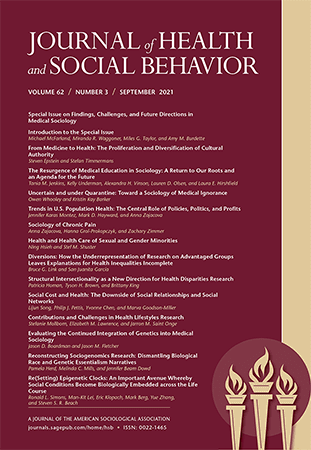Integrate research in the social and genetic sciences
One of my primary contributions to medical sociology and social epidemiology research has been efforts to summarize why it is important to continue our efforts to integrate research in the social and genetic sciences. The two papers were published nearly 10 years apart from one another but demonstrate this ongoing work in progress.
Boardman, Jason D. and Jason M. Fletcher. 2021. Evaluating the Continued Integration of Genetics into Medical Sociology. Journal of Health & Social Behavior 62(3): 404-18.
Abstract: The 2010 special issue of Journal of Health and Social Behavior, titled “Fifty Years of Medical Sociology,” defined the contours of the medical sociological perspective. We use this as a backdrop to outline and assess the continued integration of genetics into medical sociology research. We contend that the explosion of genetic and epigenetic data in population health data sources has made the medical sociological perspective increasingly relevant to researchers outside of sociology, including public health, epidemiology, and quantitative genetics. We describe vast, underappreciated, and mostly unsolved challenges that limit the scientifically appropriate interest in incorporating genetics into existing paradigms. It is our hope that medical sociologists continue this integration but redouble efforts to maintain the core insights in social science research, such as the importance of environmental and structural (i.e., nonbiological) factors in determining health processes and outcomes and the use of rich, integrated, and rigorous empirical analyses.
Boardman, Jason D., Daw, Jonathan, Freese, Jeremy. 2013. Defining the environment in gene–environment research: lessons from social epidemiology. American Journal of Public Health. 103(S1): S64–S72.
In this article, we make the case that social epidemiology provides a useful framework to define the environment within gene–environment (G·E) research. We describe the environment in a multilevel, multidomain, longitudinal framework that accounts for upstream processes influencing health outcomes. We then illustrate the utility of this approach by describing how intermediate levels of social organization, such as neighborhoods or schools, are key environmental components of G·E research. We discuss different models of G·E research and encourage public health researchers to consider the value of including genetic information from their study participants. We also encourage researchers interested in G·E interplay to consider the merits of the social epidemiology model when defining the environment.


